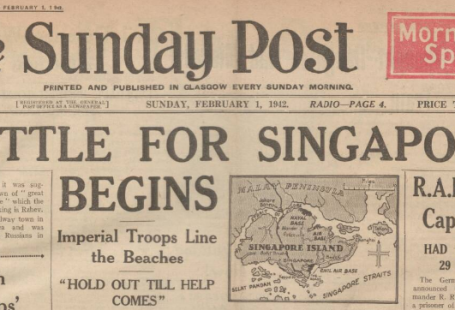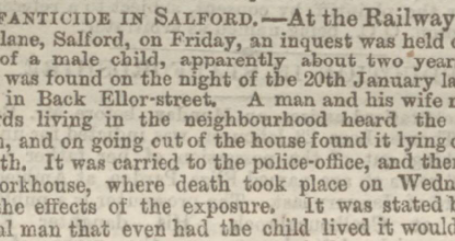On 17 February 1909, the famous Apache warrior and chief, Geronimo, died of pneumonia (he had lain out in the cold all the previous night, following a fall from a horse) at Fort Sill, Oklahoma, aged 79.
Despite being a prisoner of war since his surrender in 1886, Geronimo was still known and talked about across the Atlantic in Britain. Not long before his death, the Manchester Courier and Lancashire General Advertiser in 1908 celebrates the ‘Last Apache War Chief.’
Manchester Courier and Lancashire General Advertiser | 16 October 1908
However, not long later on 20 February 1909 the Aberdeen Press and Journal published the news of the former warrior’s death under the headline ‘A Noted Indian Chief.’
The article runs as follows:
Geronimo, a noted Indian chief, who in the past was a thorn in the side of American Government and frequently baffled the United States Army, has died at Lawton, Ohio, where has been confined as prisoner of war for many years.
It was said that Geronimo’s final words were: ‘I should have never surrendered. I should have fought until I was the last man alive.’
Aberdeen Press and Journal | 20 February 1809
However, Geronimo’s British obituary is hardly complimentary about the Apache leader, and betrays the strong prejudice felt against the Native American population at the time, illustrative of the suspicion and fear that they aroused:
As war chief of the Chi-ri-cahua Indians, he devastated Arizona, New Mexico, and Sonora, in Mexico, and made the word Apache a synonym for unmentionable atrocities.
General Nelson Miles, who had accepted Geronimo’s surrender in 1886, called Geronimo the ‘lowest and most cruel of all the Indian savages on the continent.’
Northants Evening Telegraph | 5 April 1902
But the legend Geronimo had created was a strong one, and three towns in the United States were named after him, whilst he was referenced and portrayed in a variety of songs, films and books.
We found reference to one of the very earliest films, if not the earliest, which was based on Geronimo’s life, which appeared only three years after his death. The below advertisement was featured in our special cinema title The Bioscope, 19 September 1912, for Geronimo’s Last Raid:
A magnificent two-reel subject produced in commemoration of this last of the great War Chiefs, whose continual raids, escapes from prison, and border warfare, kept the entire South Western United States in a constant turmoil until his death.
The Bioscope | 19 September 1912
And so, despite his death, Geronimo’s legacy was to live on both in Britain and America, and around the world, as he was immortalized on the silver screen.









3 comments On The Death of Geronimo – Apache Warrior and Chief
The pronunciation with ‘H’ of Geronimo and his Indian name,reminds me that
in comics the speech bubble of attacking ‘Injuns’ was HOCKAHAY!
As a white child growing up in Alberta, Canada during the ’40’sand 50’s, I was always a fan of Geronimo. We had somehow, been told of the killing of his wife and children and we empathized with his deep sorrow,thus, we became Geronimo converts and always chose to be ‘Indians’ instead of ‘cowboys’ in our childish mock battles. Several Indian families lived not far from my home and I always felt kindly toward them, even at 6 yrs old.
Yes, it’s a very sad tale, the story of Geronimo’s family. Knowing what happened helps us to understand why he was so distrustful of the US authorities of that time.